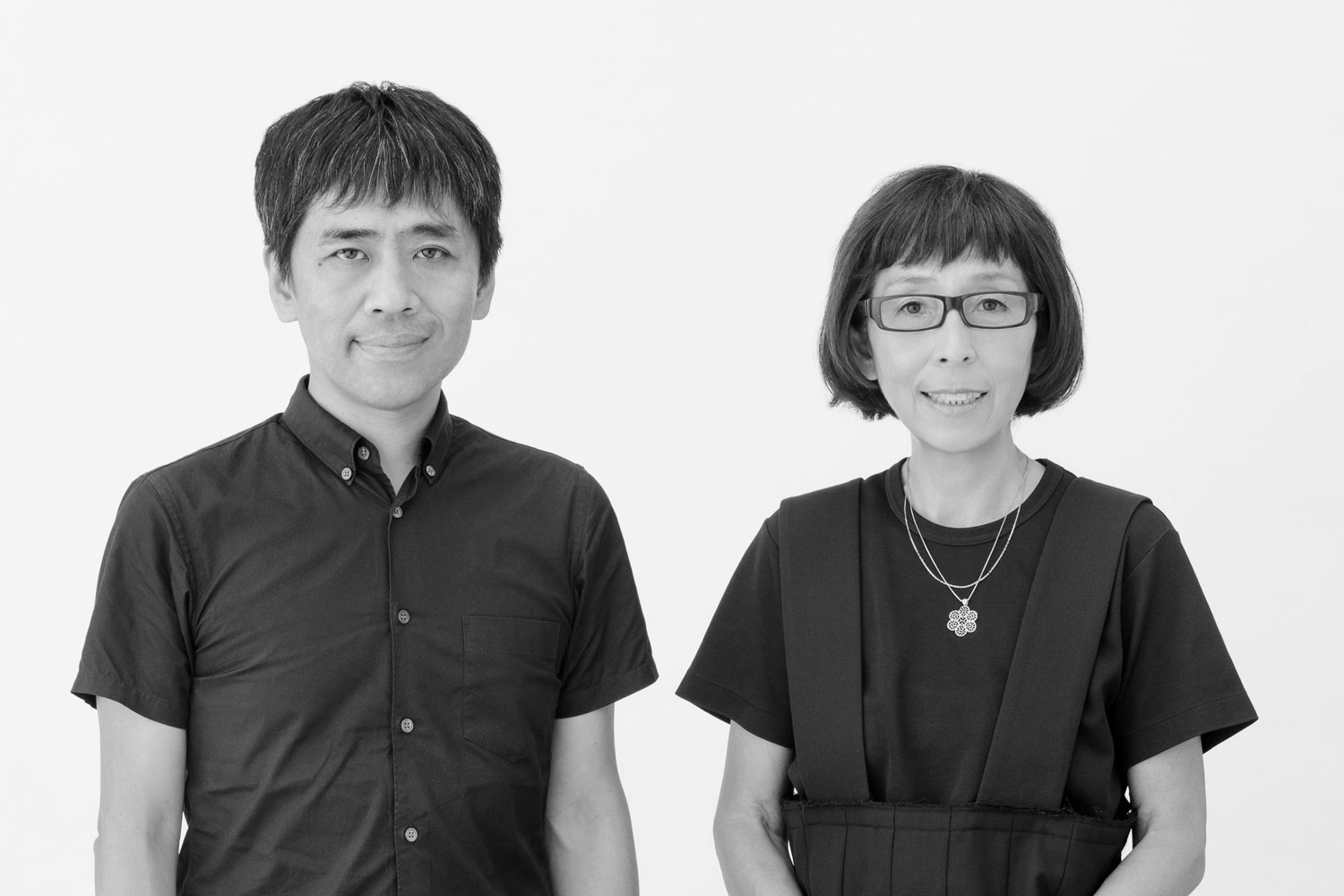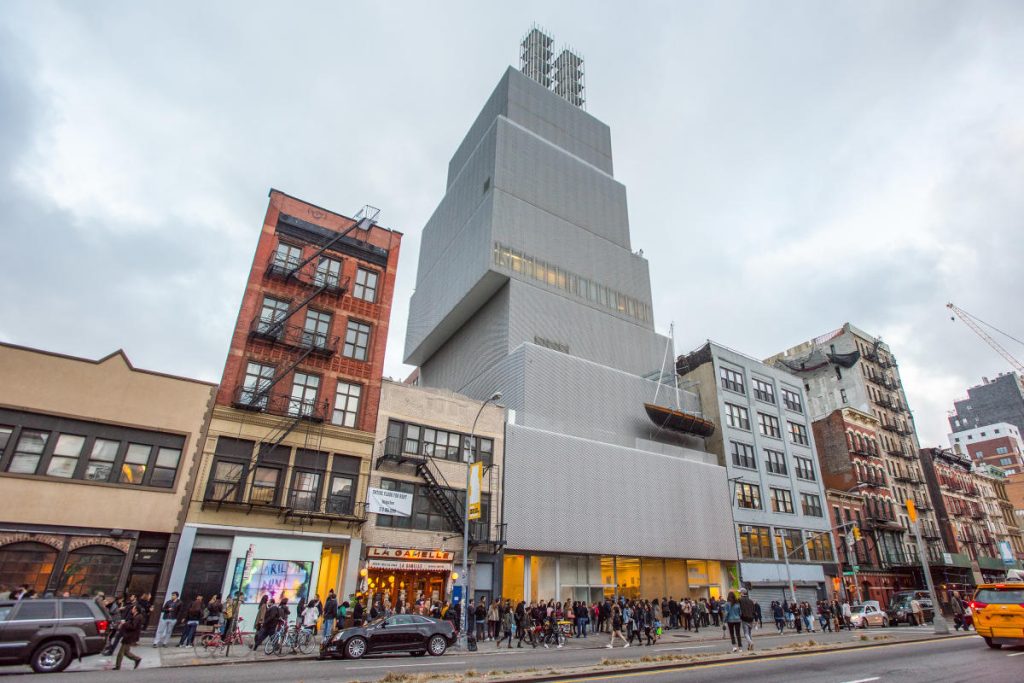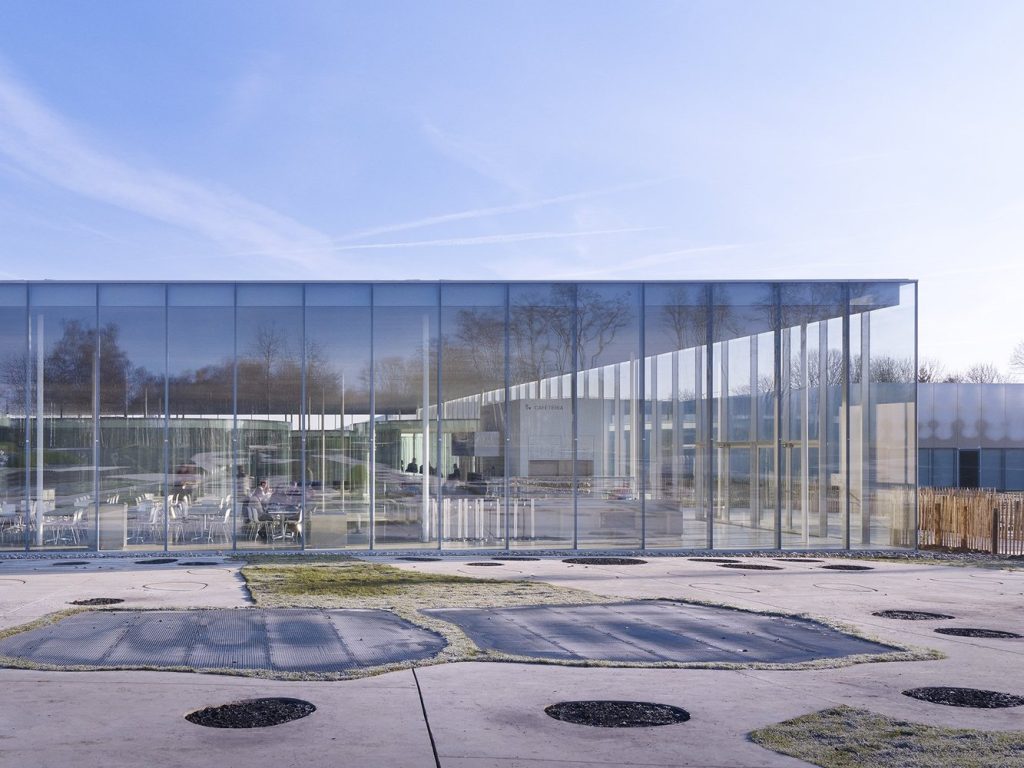How do we define the boundaries of simplicity within the realm of architecture? And when does simplicity transcend minimalism, evolving into an art form embodying a profound philosophy of space, light, and form? These questions find their way to the surface when analyzing such works as those of SANAA, a Tokyo-based architectural firm founded in 1995 by the acclaimed architects – Kazuyo Sejima and Ryue Nishizawa.
SANAA quickly gained international recognition for their innovative and minimalist approach to architecture, winning the Golden Lion at the 9th International Architecture Exhibition of the Venice Biennale in 2004 and being awarded the prestigious Pritzker Prize in 2010, making Kazuyo Sejima the second woman in history to receive this honor.
“Our aim is usually to make it impossible to tell where the landscape ends and the building begins.”
Kazuyo Sejima & Ryue Nishizawa / SANAA
The following paragraphs uncover the ethos and innovation behind studio’s transformative architectural vision through analysis of some of its notable works. These works of SANAA have assisted in shaping the discourse of contemporary architecture and left an indelible mark on the built environment.
Grace Farms
Being the first U.S. project built by SANAA after receiving the Pritzker Prize, the multi-purpose design is a centerpiece of the Grace Farms Foundation (a non-profit interdisciplinary humanitarian organization dedicated to achieving peace) that stands as a testament to the idea of unity between nature and architecture. Challenged with a task of creating a dynamic space that should gift a seamless experience among visitors and nature, arts, justice, community, and faith.
The elegant, lightweight structure of glass, concrete, steel, and wood displays a highly sensitive approach toward the surrounding landscape. Such an approach results in a design that effortlessly melds with its environment. Its single aluminum roof constructed using a dual curvature panel system creates a long, sinuous form casually floating about its topography, resembling a gentle river flowing through the land, and successfully incorporating a harmonious mixture of spaces nested under its canopy (sanctuary, library, court, commons, and pavilion).
Bocconi Campus
Resuming with the concept of neat and clean designs, the Bocconi campus design is a powerful example of successful urban regeneration integrated into the rich cultural context of Milan. The design respects and complements the historical details within the existing urban fabric while introducing modern architectural elements like sleek lines, glass facades, and minimalist aesthetics that contribute to the city’s evolving identity, revealing a bold statement of its own.
The project is a vivid expression of adaptability and flexibility on a variety of scales. The concepts of connectivity and accessibility are promoted through the central node being Piazza Sraffa – one of the main places throughout the campus to provide vibrant and dynamic gathering spaces for students. Building arrangement is targeted to create a sense of enclosure and define pedestrian pathways, encouraging movement and interaction throughout the campus. Along with modular layouts presenting a vast diversity of functions and activities throughout the masterplan, flexibility is also demonstrated through the blurred relationship between the exterior and interior expressed with extensive utilization of transparent facades. The utilized design strategies clearly showcase the vision of SANAA towards the harmonious intertwining of traditional values, commitment to education, as well as a celebration of contemporary design principles.
Rolex Learning Center
The discussed spatial qualities within the architectural language of SANAA are also showcased in the example of another educational building manifesting the concept of the floating structure. This is a learning center located at the EPFL / École polytechnique fédérale de Lausanne campus. The center embodies SANAA’s commitment to creating uniform yet flexible spaces by unifying the vast array of functions (e.g., a library, multipurpose hall, café, restaurant) within a single undulating space, making the center of the site easily accessible to the surrounding facilities.
Carving a concrete landscape of its own, the EPFL Rolex learning center is a radical and highly experimental building from the perspective of its assemblage. Demanding a specific approach towards solving the formwork, the construction of clean and organic forms was achieved through the exploitation of design-to-production methodology. This has tremendously eased the process of planning and construction as the detailed 3D model of the slab surface resulted in accurate 2D drawings of all 1,500 formwork tables and data for the CNC-cutting of around 10000 cleats.
The 11 arches supporting the building’s concrete floor, raising most of it above the ground, as well as the delicate and almost invisible supports for its elaborate curving roof system, are significantly contributing to the establishment of a unique link with the existing landscape of the city and campus, providing numerous outdoor spaces with spectacular views and circulation routes stretching underneath the building and highlighting the gentle and smooth slopes, terraces and the internal ‘patios’.
Glass Pavilion at the Toledo Museum of Art
Solidifying firm’s ethos of consolidating diverse functions within a unified architectural expression, the Glass Pavilion of the Toledo Museum of Art functions both as an exhibition space for the museum’s renowned glass collection and a glass-making facility. Demonstrating yet another successful achievement in SANAA’s history of creating a flowing connection between the inside and the outside, the pavilion creates an immersive experience with the surrounding vegetation through the use of courtyards and continuous curtain walls penetrating through a single-story square structure with rounded corners.
Making a smart and functional use of its labyrinth-like interior with buffer zones formed through undulating partitions, the museum showcases its glass exhibits in galleries of various sizes and climates (including museum exhibition spaces, the glass-making hot shop, and the outdoors). The contemporary sculptures are nestled within the fluid plan, between undulating, transparent partitions reminiscent of wandering through a gigantic lightbox, thus enhancing the overall experience of exploration and discovery of the Glass Pavilion.
New Art Museum NY
Jumping onto a slightly different scale of SANAA’s approach towards clean lines and neatness in construction, the New Museum building stands as a striking and iconic addition to the city’s architectural landscape. Completed in 2007 and situated in the Bowery neighborhood of Manhattan, the museum is dedicated exclusively to promoting new ideas, showcasing contemporary art, and introducing emerging international artists.
The building’s design is a dynamic and adaptive response to its urban context. The stacked boxes of varying sizes and heights create a sense of movement, playfulness, and vitality amidst the squared blocks of Lower Manhattan. Such intentional shifting of the ‘boxes’ along with careful selection of materials and elaborate façade design clearly translate the design objective of appearing as a light and delicate object within the given massiveness of the surrounding volumes, adds visual interest, maximizes natural light penetration and creates an inviting and engaging exterior. Clad in anodized aluminum mesh, the facade simultaneously exudes a sense of transparency and obscurity, concealing functional elements while creating a continuous, lively, and elegant surface that seamlessly integrates with its surroundings.
La Samaritaine
Speaking of dynamic multi-story volumes with inviting exteriors, La Samaritan reintroduces a Parisian landmark that revolutionized retail by bringing new architectural typology – the department store(s) – into life. The project reflects on SANAA’s commitment to blending contemporary design with historical preservation since it involved both the restoration of its iconic constituents dating back to the 20th century (e.g., emblematic Art Nouveau façade, staircase, glass skylight of building’s atrium), as well as the introduction of modern elements for the sake of enhancing functionality.
According to Cutieru, the transparent wavy façade represents a smooth extension of the avant-garde spirit and exploration of glass materials initiated by the project’s original architects, Frantz Jourdain and Henri Sauvage. This resulted in a fruitful synthesis between the old and the new, with the historic facade serving as a backdrop for a sleek double-skin glass structure that accommodates a range of functions (e.g., retail spaces, offices, a luxury hotel).
Sydney Modern Museum
Designed as a complementary counterpart to the historic 19th-century neoclassical façade of the Art Gallery of New South Wales (AGNSW) in Sydney, Australia, the expansion designed by SANAA aims to provide additional exhibition space for contemporary art (including galleries dedicated to Aboriginal and Torres Strait Islander art), multimedia installations, and major exhibitions.
Embracing the play between open and closed surfaces, the project features a series of interlocking pavilions that gracefully step down towards Sydney Harbour, following natural contours of the land. Not only does such a design approach allow visitors to enjoy the stunning views of the surrounding environment and blur the boundaries within the interior-exterior relationship, but it also creates a complex composition that stimulates engagement on multiple levels.
Below ground, a former World War II naval bunker has been ingeniously repurposed into a vast underground gallery space known as “the Tank”. It provides a unique venue for large-scale and site-specific installations. Lying within the project’s core, sustainability distinguished the project by making it the first public art museum in Australia to achieve a six-star Green Star design rating. Powered entirely by renewable energy (with 10 % coming from the solar panels on the entrance pavilion roof) and featuring innovative rainwater harvesting systems, the centerpiece of AGNSW’s expansion sets a new standard for architectural excellence and environmental responsibility in the heart of Sydney.
Le Louvre Lens
Located in the former mining town of Lens in the Nord-Pas-de-Calais region of France, the Louvre Lens is a satellite branch of the renowned Louvre Museum in Paris, which was designed to foster cultural exchange and revitalize local community. Therefore, apart from its exhibition spaces, Le Louvre Lens includes educational facilities, auditoriums, and outdoor spaces for public programming and events.
With an extensive emphasis on simplicity and harmony, SANAA’s design succeeds in blending the museum into its surroundings by avoiding the imposition of rectilinear forms that could clash with the site’s delicate beauty. Instead, the museum’s long, gently curving lines and anodized aluminum facades reflect the landscape, creating a luminous and inviting body that gracefully stretches across it. In fact, the building’s innovative use of natural light, achieved through large skylights and expansive windows that fill the galleries with daylight, is considered one of the museum’s most significant features. This not only enhances the viewing experience but also fosters a dynamic interplay between the artworks, the architecture, and the ever-changing patterns of light throughout the day.
In a context where Japanese culture often oscillates between traditional and modern influences, SANAA emerges as a pioneering force at the forefront of global architecture that is able to graciously combine both while meeting functional constraints and creating unforgettable spacious journeys along the way. Consistently challenging conventions and reimagining traditional forms and spaces, their works create a new inspiring language of architecture that transcends the boundaries between architecture and its surrounding environment.




























Leave a comment